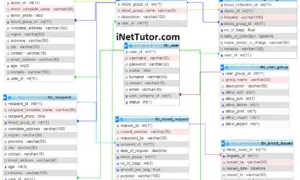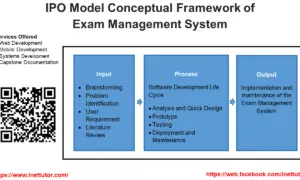Student Academic Tracking Use Case Diagram
A system’s ability to track and manage student academic performance data is shown visually in the Student Academic Tracking Use Case Diagram. It describes the various interactions between the system and the actors, such as instructors, students, and administrators. It helps to discover areas where the system may need modification and guarantees that it satisfies the expectations of its users by giving a clear image of the functionality. We will examine the significance and advantages of employing a Student Academic Tracking Use Case Diagram in the creation of a thorough and efficient student academic tracking system in this blog article.
About the Project
Tracking and monitoring student’s performance serves a vital role in providing information that is used to assist students, teachers, administrators, and policymakers in making decisions that will further improve the academic performance of students. In the traditional way, the teachers and school administrators collect academic records of students and extract information from them to assess the students’ performance. The capstone project entitled “Student Academic Performance Tracking and Monitoring System” allows academic institutions to monitor and gather data about the academic performance of students where decisions are derived to further improve the students’ learning outcomes.
What is Use Case Diagram?
A Use Case Diagram is a visual representation of the interactions between actors and a system being developed. In the context of Student Academic Tracking, actors may include teachers, students, parents, and school administrators. The Use Case Diagram outlines the different use cases, or scenarios, that the system will need to support, such as tracking attendance, grades, and assessments.
In the study and software development of Student Academic Tracking, a Use Case Diagram is used to establish a thorough and efficient method for tracking and monitoring student academic performance. It makes it easier for all stakeholders to communicate and work together by ensuring that they all understand the functionality of the system. This makes it simpler for academics and software development teams to spot potential system improvement areas and decide which functionalities should be added.
In addition, a Use Case Diagram provides a useful tool for testing the system. By outlining the different use cases, researchers and software development teams can more easily determine which tests need to be performed, and which interactions and transactions need to be evaluated. This helps to ensure that the final product is both efficient and effective.
Moreover, a Use Case Diagram also helps to ensure that the system meets the needs of its users, including students, teachers, and administrators. By providing a clear picture of the system’s functionalities, it helps to identify areas where the system may need improvement and ensures that it meets the needs of its users.
Use Case Diagram
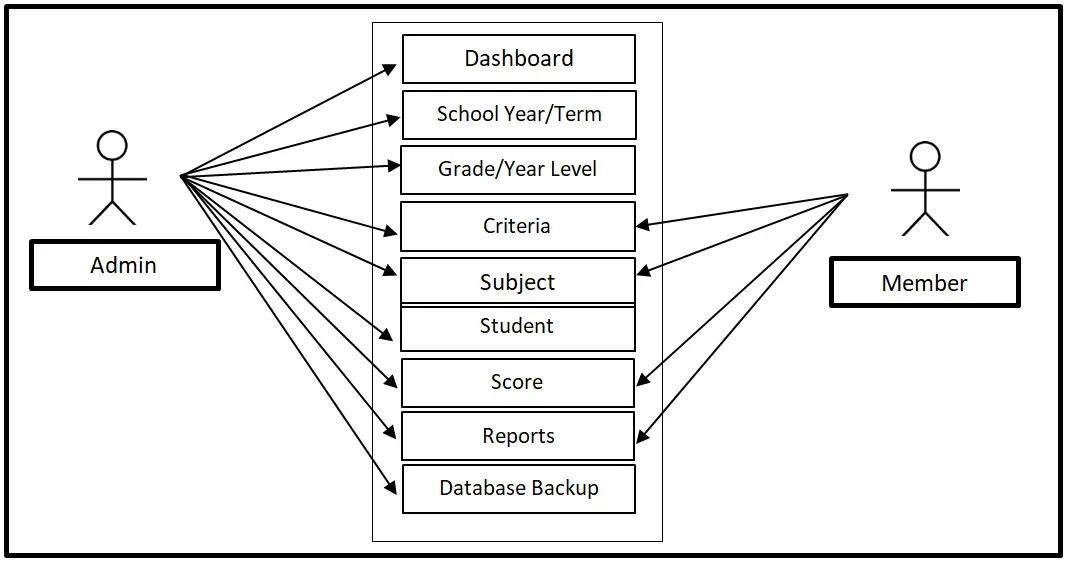
The image shown above is the Use Case Diagram of the Student Academic Performance Tracking and Monitoring System. The system has two user sides, the Administrator and the member. The administrator can access the entire core modules of the system while the member can access the Criteria, Subject, Score and Reports module in the system.
Use Cases
The following are the discussions that describe how a user uses a system to accomplish a particular goal.
Use Case: Dashboard
Actor(s): Admin
Description:
This feature is used to manage the information displayed in the dashboard of the system.
Successful Completion:
- The admin can search, add, update and remove information to be displayed in the dashboard.
Alternative: The admin can access and manage all dashboard information.
Precondition: The admin will login first to access the dashboard.
Post Condition: updated dashboard information
Use Case: School Year/Term
Actor(s): Admin
Description:
This feature is used to manage the School Year or Term at school using the system.
Successful Completion:
- The admin can search, add, update and remove School Year/Term details in the system using this feature.
Alternative: The admin will update every current school year/term
Precondition: The admin will login first to access the School Year/Term module.
Post Condition: Updated School Year/Term
Use Case: Grade Year/Level
Actor(s): Admin
Description:
This feature is used to manage the Grade Year/Level of registered students in the system.
Successful Completion:
- The admin can search, add, update and remove Grade Year/Level details in the system using this feature.
Alternative: The admin will add and update Grade Year/Level of students.
Precondition: The admin will login first to access the Grade Year/Level module.
Post Condition: updated Grade Year/Level
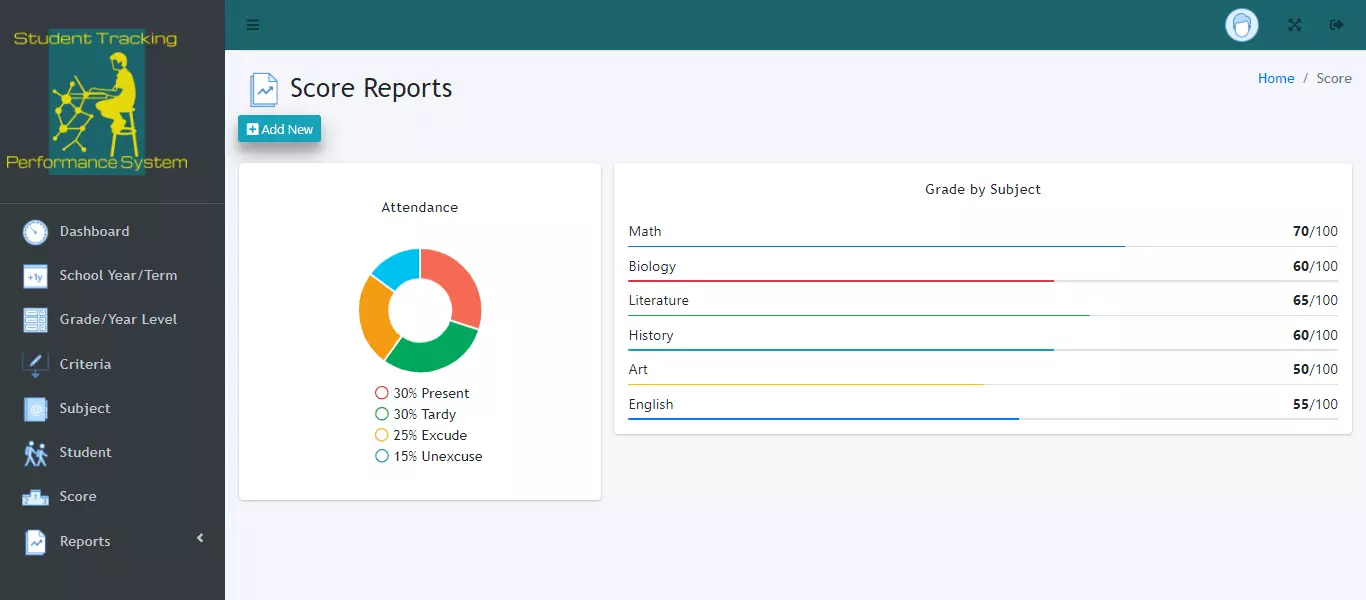
Use Case: Criteria
Actor(s): Admin and Member
Description:
This feature is used to view and manage the criteria for the academic performance of students in the system.
Successful Completion:
- The member can add and view criteria in the system.
- The admin can search, add, update and remove information of the criteria.
Alternative: The members can only view and add criteria; the admin can access and manage all of the criteria’s information.
Precondition: The admin and the members will login first to access the Criteria module.
Post Condition: updated Criteria module
Use Case: Subject
Actor(s): Admin and Member
Description:
This feature is used to view and manage the subject of students in the system.
Successful Completion:
- The member can add and view subjects in the system.
- The admin can search, add, update and remove information of the subject.
Alternative: The members can only view and add subject; the admin can access and manage all of the subject’s information.
Precondition: The admin and the members will login first to access the Subject module.
Post Condition: updated Subject module
Use Case: Student
Actor(s): Admin
Description:
This feature is used to manage the profile of the students in the system.
Successful Completion:
- The admin can search, add, update and remove student details in the system using this feature.
Alternative: New student will be registered, for old students, they can use this to update their profile.
Precondition: The admin will login first to access the Student Info module.
Post Condition: registered student, updated student information
Use Case: Score
Actor(s): Admin and Member
Description:
This feature is used to view and manage the score of students in the system.
Successful Completion:
- The member view score in the system using this feature.
- The admin can search, add, update and remove score information.
Alternative: The members can only view scores; the admin can access and manage all of the score’s information.
Precondition: The admin and the members will login first to access the Score module.
Post Condition: updated Score Information
Use Case: Reports
Actor(s): Admin and Member
Description:
This feature is used to view and print the reports in the system.
Successful Completion:
- Members can view and print reports using this feature.
- Admin can view, print and export the report of the system.
Alternative: None
Precondition:
- Members will need to login first to access the Reports module.
- Admin will need to login to access the reports.
Post Condition: hard and soft copy of the report of the system.
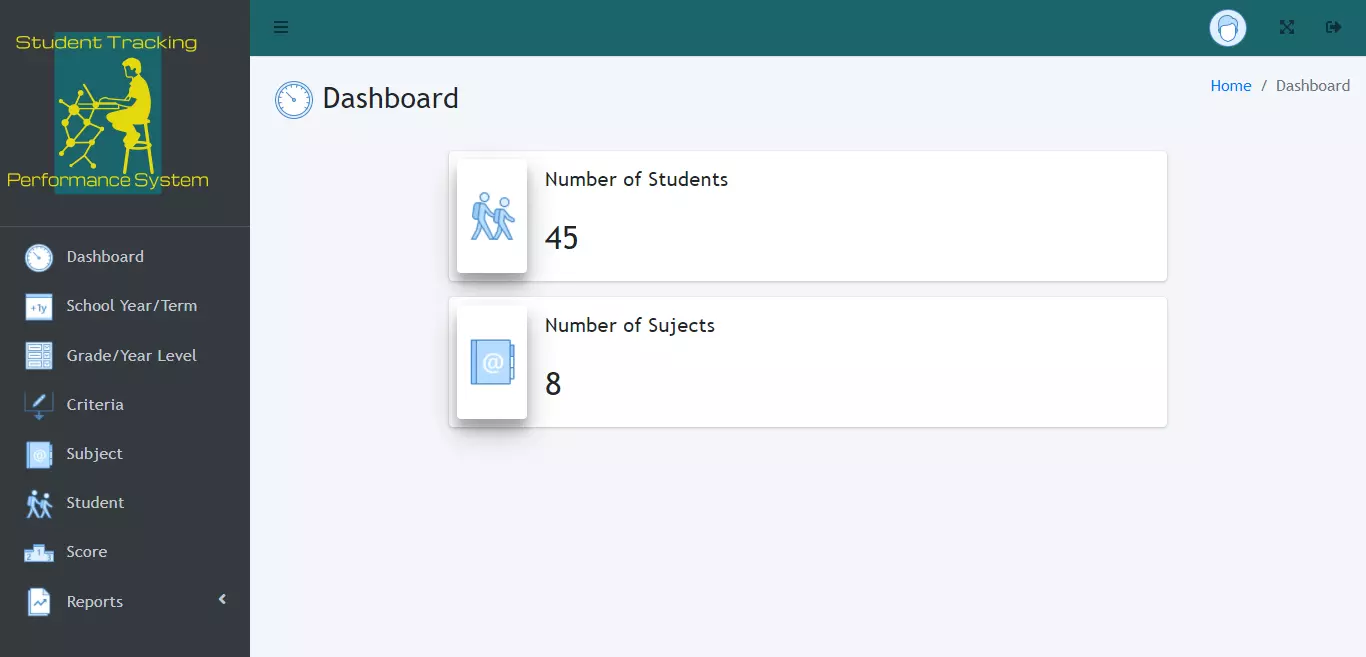
Use Case: Database Backup
Actor(s): Admin
Description:
This feature is used to manage the backup database of the system.
Successful Completion:
- The admin can add, edit, and update database backup information.
Alternative: None
Precondition: Admin will create and connect the backup database.
Post Condition: new backup database.
Summary
“Student Academic Performance Tracking and Monitoring System” allows academic institutions to monitor and gather data about the academic performance of students where decisions are derived to further improve the students’ learning outcomes. The image shown above is the Use Case Diagram of the Student Academic Performance Tracking and Monitoring System. The system has two user sides, the Administrator and the member. The administrator can access the entire core modules of the system while the member can access the Criteria, Subject, Score and Reports module in the system. In conclusion, the Use Case Diagram is a valuable tool in the research and software development of Student Academic Tracking. It provides a comprehensive and effective platform for tracking and monitoring student academic performance, improves communication and collaboration between stakeholders, and provides a useful tool for testing the system.
Readers are also interested in:
Student Tracking Performance Database Design
Student Performance Tracking ER Diagram
Student Performance Tracking Conceptual Framework
You may visit our Facebook page for more information, inquiries, and comments. Please subscribe also to our YouTube Channel to receive free capstone projects resources and computer programming tutorials.
Hire our team to do the project.

